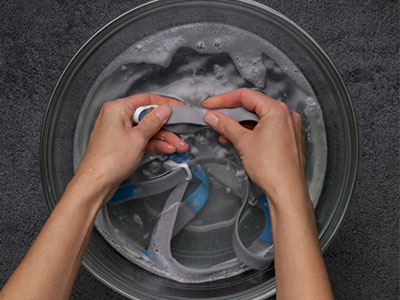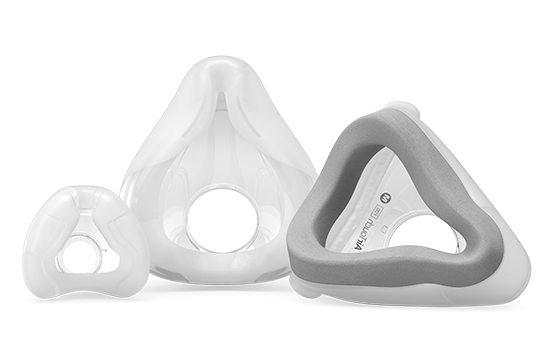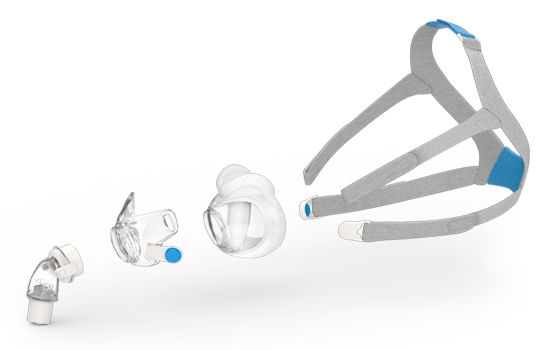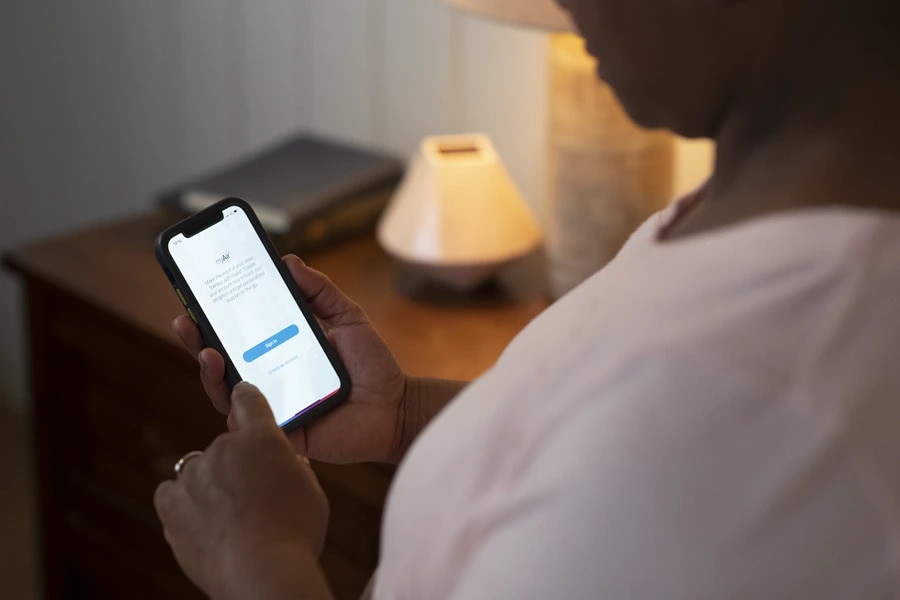Mask cleaning & replacement
To maintain good quality therapy and provide your patients with a comfortable experience, it’s important that their CPAP or respiratory care mask and components are cleaned and replaced regularly. Discover why and how.
Mask cleaning
Why is it important that your patients clean their mask?
Each time a patient uses their mask, their skin leaves an oil residue around the seal. Over time, facial oil build-up can accelerate wear and tear on the mask. Masks can also become discoloured with time.
That’s why we recommend that your patients clean their masks regularly to ensure optimum therapy.
Your patients should wash their masks daily according to user guide instructions with mild soap or diluted liquid detergent and warm water (30°C/86°F). We also recommend that patients wash their face before bed to remove excess facial oils, ideally with a pH neutral soap, and avoid using facial lotions and creams where the mask comes into contact with their face. These products may interfere with mask seal and potentially degrade the quality of the cushion over time.

How should my patients clean their masks?
Refer your patients to their specific mask user guide for detailed instructions on cleaning their mask.
The following cleaning instructions apply to most masks:

Mask replacement
Why and how often should my patients replace their CPAP mask cushion?
Like any piece of clothing or accessory, mask cushions become worn out over time. An old mask is more likely to leak, while old headgear may lose its elasticity, leading to over-tightening and discomfort. Using a mask that’s in good condition will help your patient to enjoy comfortable, effective therapy every night.
The life of a mask cushion depends on various factors, such as how often your patient wears it, skin type (dry, oily, etc.), and how often the mask gets cleaned. Because the mask replacement schedule is unique to each patient and type of mask, we highly recommend that patients inspect their mask according to the cleaning and maintenance routine outlined in the user guide supplied with the mask. It contains guidelines to help you and your patient to inspect, assess and replace the different mask components.

How can I tell that it's time for a replacement?
If any part of the system shows signs of deterioration (cracking, crazing, discolouration, tears, cushion damage, etc.), that component should be discarded and replaced.
In general, it might be time for your patient to replace the mask or some of its component parts if:
- Your patient has to tighten the straps very frequently
- The mask feels stiff, instead of soft and springy
- Your patient feels the treatment may be less effective than usual
- The mask cushion is slippery even after it’s been cleaned
- The mask cushion is no longer clear and transparent
- The mask cushion and frame show signs of wear, stiffness, cracks or breaks
Because the replacement schedule is specific to each mask and each patient, we highly recommend reading the mask user guide for detailed information.




